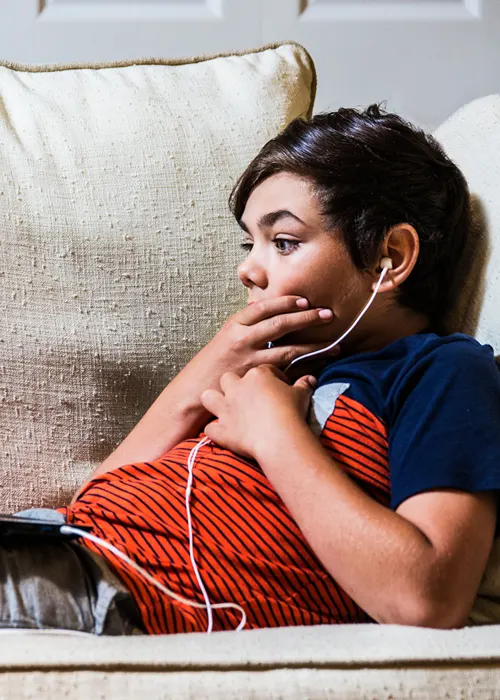Ensuring Online Safety: A Guide for Parents and Educators
As a parent or educator, you know the online world can be a double-edged sword for children. While it offers valuable resources and connections, it also exposes them to various risks that can be harmful. You might wonder how to strike the right balance between allowing freedom and ensuring safety.
By implementing effective strategies, you can create a safer online environment for kids, but it requires a proactive approach. What steps should you consider first to empower children in this digital age?
Understanding Online Risks
Traversing the online world can feel like walking through a minefield for both parents and educators. You’re not alone in worrying about the potential dangers lurking behind screens. Understanding online risks is vital for protecting your children and students as they navigate both the online and offline world.
First, consider the prevalence of cyberbullying. It can happen in the most unexpected places and can leave lasting emotional scars.
Equally concerning is exposure to inappropriate content, which can arise from seemingly innocent searches. You’ll want to keep channels of communication open, encouraging kids to share their experiences without fear of punishment.
Another risk is online predators. They often disguise themselves as friends, making it essential to educate your children about the importance of privacy and recognizing suspicious behavior.
Setting Up Parental Controls
Establishing a safe online environment for your children begins with setting up parental controls. These tools are vital for managing what your kids can access online, helping you create boundaries that suit your family’s values.
Start by exploring the settings available on devices your children use—smartphones, tablets, and computers often come with built-in parental controls that are easy to navigate. You can filter out inappropriate content, limit screen time, and even monitor app usage.
Consider using dedicated parental control software or apps that provide more extensive features, such as location tracking and social media monitoring. Make certain to customize settings based on your child’s age and maturity level, as this guarantees they’re getting an age-appropriate experience.
Regularly review and adjust these controls as your child grows and as technology changes. Encourage your children to understand why these measures are in place; it’s about their safety, not just restrictions.
Encouraging Open Communication
While setting up parental controls is an important step in ensuring your child’s online safety, fostering open communication is equally essential. You want your child to feel comfortable discussing their online experiences, whether they’re positive or negative.
Start by creating a safe space where your child knows they can talk to you without judgment. Ask open-ended questions about their online activities and interests, showing genuine curiosity in what they do.
Make it a routine to check in regularly, so they know this conversation is a priority. Encourage them to share any concerns or uncomfortable situations they encounter online.
Let them understand that it’s okay to make mistakes and that you’re there to support them, not to punish them.
Teaching Digital Citizenship
Digital citizenship is like a guiding compass that helps your child navigate the vast online world safely and responsibly. It’s essential for you to teach your child the importance of being respectful, responsible, and ethical while interacting online.
Start by discussing the values of empathy and kindness, emphasizing how their words and actions can impact others in digital spaces.
Encourage your child to think critically about the information they encounter online. Teach them to question sources and verify facts before sharing anything. This practice not only enhances their understanding but also builds their ability to discern trustworthy content from misinformation.
Set clear guidelines for online behavior and model those behaviors yourself. Show your child how to protect their personal information and the significance of privacy settings on social media.
Remind them that digital footprints last forever; consequently, it’s vital to be mindful of what they post.
Recognizing Signs of Cyberbullying
As your child navigates the online world, it’s important to be aware of the darker side of digital interactions, such as cyberbullying. Recognizing the signs early can make a significant difference in your child’s emotional well-being.
Look for changes in their behavior—if they suddenly seem withdrawn, anxious, or upset after using their devices, it could be a warning sign.
Pay attention to their online activities. If they start avoiding social media or suddenly stop communicating with friends, that might indicate something’s wrong. You might also notice them receiving negative comments or messages that seem to impact their self-esteem.
It’s essential to have open conversations about their online experiences and feelings. Encourage your child to share any upsetting interactions they encounter. Make sure they know they can come to you without fear of judgment.
By fostering a supportive environment, you’ll empower them to speak up. Finally, keep an eye out for physical signs, like changes in sleep patterns or appetite, which could reflect emotional distress caused by cyberbullying.
Being vigilant and proactive can help you address these issues before they escalate.

Promoting Safe Social Media Use
Your child’s safety on social media hinges on understanding how to navigate these platforms responsibly. Start by having open conversations about their online experiences. Encourage them to share what they enjoy and any concerns they might have. This builds trust and helps you stay informed about their digital life.
Set clear guidelines on appropriate behavior. Discuss the importance of treating others with kindness and respect, just as they’d offline. Remind them that once something is posted, it can be difficult to delete, and it might affect their reputation.
Help your child recognize the potential dangers of interacting with strangers online. Emphasize the importance of keeping personal information private, such as location or school details. Encourage them to think critically about the content they consume and share.
Lastly, stay engaged with their social media activities. Check in regularly, and consider following them on their platforms. This not only allows you to monitor their interactions but also shows that you care about their online well-being.
Protecting Privacy Online
Nine out of ten kids share personal information online without realizing the risks involved. It’s essential to guide them in understanding what privacy really means in the digital world.
Start by having open conversations about the types of personal information they might share, like their full name, address, or school details. Make it clear that even seemingly harmless details can lead to privacy breaches.
Encourage your kids to use privacy settings on their social media accounts. Show them how to customize who can see their posts, and remind them to think before they share anything. Instilling the habit of double-checking their audience before posting can make a big difference.
Teach them about the importance of strong passwords and using unique passwords for different accounts.
Explain the risks of using public Wi-Fi for personal transactions, and encourage them to use a VPN when necessary.
Educating About Inappropriate Content
Many children encounter inappropriate content online, often without understanding the potential impact it can have on their well-being.
It’s essential for you, as a parent or educator, to create an open dialogue about what they might come across. Start by explaining the different types of inappropriate content, such as violent imagery, explicit material, or harmful discussions. Help them recognize that not everything online is safe or suitable.
Encourage your child to come to you if they see something that makes them uncomfortable. Reinforce the idea that they won’t get in trouble for sharing their experiences. You can also discuss the emotional responses they might’ve when encountering such content, emphasizing that it’s normal to feel confused or upset.
Additionally, consider using age-appropriate resources to guide your discussions. Books, videos, or interactive activities can make the topic more relatable—especially helpful if your child is enrolled in an online middle school, where exposure to diverse content may be more frequent.
Monitoring Screen Time
As children increasingly engage with digital devices, it becomes essential to monitor their screen time to ensure a healthy balance. You want to guarantee that technology enriches their lives rather than detracts from them.
Start by setting clear guidelines around daily screen time limits. The American Academy of Pediatrics suggests no more than one hour of high-quality programming for children aged 2 to 5 and consistent limits for older kids.
Encourage activities that promote physical movement and social interaction. Balance is key; integrating outdoor play or family game nights can help offset screen time.
Use parental control apps to track usage and set boundaries, but remember, technology shouldn’t be the only tool in your toolbox. Regularly engage in conversations about what they’re watching and playing. This way, you stay informed and involved in their digital lives.
Also, model healthy screen habits yourself. Kids learn by example, so showing them how to balance screen time with other activities can lead to better choices.
Resources for Continued Learning
Balancing screen time is just one aspect of guiding kids through their digital experiences. To guarantee their online safety, it’s crucial to equip yourself with the right resources.
Start by exploring websites like Common Sense Media, which offers reviews on apps, games, and websites, helping you make informed decisions about what’s suitable for your child.
Consider enrolling in online courses specifically designed for parents and educators. Organizations such as the Family Online Safety Institute provide valuable insights and strategies that can enhance your understanding of digital safety.
Don’t overlook the power of community. Join local parent groups or online forums where you can share experiences and learn from others maneuvering similar challenges.
Podcasts and webinars on online safety can also be great resources, offering expert advice that fits into your schedule.
Finally, keep communication open with your child about their online activities and encourage them to voice any concerns. This proactive approach fosters a supportive environment, making it easier for them to navigate the digital world safely.
Conclusion
By taking proactive steps to guarantee online safety, you can help your child navigate the digital landscape with confidence. It’s crucial to keep the lines of communication open and stay informed about the risks they face. Remember, it’s better to be safe than sorry—so equip them with the tools they need to make responsible choices. Together, you can build a solid foundation for a positive online experience, guiding them to stay one step ahead of potential dangers.









